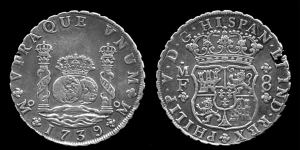
By David Liechty
With irredeemable Greenbacks and precious metal coin circulating at identical legal, “dollar”, value (see Thompson v. Butler, 95 U.S. 694 at 696 (1878) , stating that “[a] coin dollar is worth no more for the purposes of tender in payment of an ordinary debt than a note dollar”), and with the 1861 suspension of payment still in effect with regard to state bank-issued notes, Gresham’s Law took effect. As Greenbacks and state bank notes declined in absolute value compared to minted coin, this coin disappeared from circulation. By 1862, copper-nickel pennies were the only coins left in circulation, and the Federal government filled the gap initially with stamps, tickets, and fractional paper notes (see Murray Rothbard, A History of Money and Banking in the United States, Mises Institute (2002), p. 126).
Some in Congress saw the lack of circulating coin as a threat to the government’s ability to sell bonds to fund the ongoing Civil War. Rather than require resumption of payment and allow over-issued bank notes to clear from the system, returning coin to circulation, Congress took a different approach to securing purchase of its bonds, fundamentally altering money and banking in the United States. In the 1863 and 1864 National Currency Acts (Act of 25 February 1863, ch. 58, 12 Stat. 665, ,superseded by Act of 3 June 1864 ch. 106, 13 Stat. 99). Congress authorized creation of a network of private national banks issuing paper money secured by government debt rather than coin. Debate on the constitutionality and expediency of these acts was considerable, with the 1863 Act passing the Senate by only two votes.
Each banks created under these acts was required to use at least one-third of its capital stock raised to purchase United States bonds, and to deposit these bonds in trust with the Treasury (§16, 13 Stat. 104). In exchange, the Treasury gave each bank notes, “secured by United States bonds”, to be “issue[d] and circulate[d] the same as money”, with the banks forbidden from issuing any other notes (§21, §23, 13 Stat. 105-106). The banks had to redeem these notes “in lawful money of the United States”, upon demand, on penalty of forfeiture or sale of their bonds by the Secretary of the Treasury, and the notes were made quasi-legal tender by allowing their use in all US government transactions other than payment of customs duties and interest on government bonds (§23, §46, 13 Stat. 106, 113). As the national banks so created could only increase the issuance of notes through purchase of government debt, the Acts formed an unprecedented link between banks and the United States government.
A three-tiered system of banks was created. Banks located outside one of seventeen named cities were required to keep “lawful money” on hand equal to 15% of deposits and circulating notes, but up to 60% of this “lawful money” could be in the form of demand deposits held by the bank with national banks located in the named cities (§31, 13 Stat. 108-109). Likewise, the banks in the named cities were required to have reserves equal to 25% of the value of all deposits and circulating notes, but could hold up to half of this reserve as deposits with certain national banks in New York City approved by the Comptroller (§31, §32, 13 Stat. 108-109). Since the banks receiving the deposits could count this money toward their own reserve requirement, this double- (or even triple-) counting effectively lowered the reserve requirement overall, greatly expanding the potential money supply.
Constitutionality of the National Currency Acts was tangentially addresses in Farmers’ and Mechanics’ National Bank v. Dearing, where the Supreme Court, deciding a related issue, stated in passing that “the constitutionality of the National Currency Act of 1864 is not questioned” (91 U.S. 29, 33 (1875) ).
The decentralized system of state-chartered banks issuing notes backed, at least nominally, by coin was supplanted by a national network of banks dependent on government debt. State-chartered banks continued to issue their own notes during this time, but of necessity began maintaining deposit accounts with national banks to redeem national notes. These banks effectively became a fourth-tier in the national fractional reserve system (Rothbard, History, p. 144). In 1865 ( Act of 3 March 1865, ch. 78, §6, 13 Stat. 469, 484, reenacted in Act of 13 July 1866, ch. 184, §9, 14 Stat. 98, 146), Congress levied a 10% tax on all state bank-issued notes, effectively shutting down competition from these banks and tying them completely to the national system. The Supreme Court upheld this tax in Veazie Bank v. Fenno(75 U.S. (8 Wall.) 533 (1869)).
David Liechty is an attorney who is currently studying for a Phd in Constitution Studies. He is interning with Solari this summer.
See Parts (I), (II), (III), (IV),(V), (VI), (VII), (VIII) and (IX)

